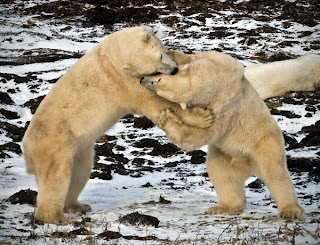We were privileged to travel to Washington, D.C. this summer to attend the 2011 Folklife Festival, sponsored by the Smithsonian Institution and the National Park Service on the National Mall. This outstanding annual event dates from 1967. It brings musicians, artists, performers, craftspeople, workers, cooks, storytellers and others together "to demonstrate the skills, knowledge, and aesthetics that embody the creative vitality of community-based traditions." And, it is free! Here, through some of my photographs, is my humble way of sharing this incredible experience enjoyed by more than one million visitors. These 12 images are some of my favorites culled from about 450 I shot. Each identifies and tells a little about the subject in a single, short paragraph. Enjoy!

Simbè Sankarè hails from Sèvarè in the West African Republic of Mali. He was modeling “bogolan” fabric, or “mud cloth,” which is fabric that is dyed using fermented mud. He was one of three residents from his village in Mali who were demonstrating their culture at the Folklife Festival's Peace Corps section along with a returned Peace Corps volunteer. Sankarè was an affable and colorful cultural diplomat for his country.

Desiree Diego, seen here, is lead singer for the Umalali Women Singers of the Garifuna Collective from Belize. She performed on the Peace Corps World Stage at the Folklife Festival. The Peace Corps' 50th Anniversary was one of the three themes of the 2011 Festival. The others celebrated the culture of the nation of Colombia and American rhythm and blues.

Elkin de Jesús Meneses, at right, is a musician with the group "Aires Del Campo," which is from the Coffee Region of Colombia. Here, he plays a "bandola" guitar on stage at the Colombia section of the Folklife Festival. The stage backdrop was, for me, a distracting feature in the photograph that I otherwise liked very much. Using a technique I developed in photographic editing, I created this backdrop to better highlight the image of the musician.

Traditional carpet weaving is demonstrated by Khadija Ighilnassaf, one of two carpet weavers from Morocco demonstrating their craft at the Folklife Festival's Peace Corps section. She is from the city of Taznakht, Morocco. The craft, and the weavers' traditional dress, are part of the rich heritage of people and places served by thousands of Peace Corps volunteers over the past five decades.

Alexander de Jesus Nieto Marin is a
silletero, or flower vendor, from Medellín, Colombia. During the festival he carried flowers like these red gladiolas in a cultural display of the flower trade in his city, which includes the annual Festival of the Flowers, one of Medellín’s most distinctive cultural markers. The Festival of the Flowers is one of the ways Colombia is celebrating its culture and hopes to bring travelers to the city that once was the home of drug cartels.

Hands at work make a photographic study as we see here and in two other close-up images below. At the right, we see the hands of Mele Vaikeli, a Tongan grass weaver at the 2011 Smithsonian Folklife Festival. She was part of demonstrations for the 50th Anniversary of the Peace Corps.

Here we see at work the hands of Burul Zhakypova of the Altyn-Kol Women's Handicraft Cooperative in Kochkor in the Kyrgyz Republic. She, too, was part of demonstrations for the 50th Anniversary of the Peace Corps and was as colorful in dress as the fabric that she was sewing.

In this close-up, we see the steady hands of Juan César Bonilla González, a Tagua Palm (or vegetable ivory) seed craftsman from Colombia, as he carves fine miniature jewelry. He is from the village of Tinjacá in the Andean Highlands. This hard, white seed is an important substitute for elephant ivory in making beads, buttons, figurines and jewelry.
Another artisan sharing his craft was potter Emilio Antón Flores of Chulucanas, Peru, another of the artists who was among those demonstrating their work as part of the 50th Anniversary of the Peace Corps. Flores is president of an artisan association in northern Peru. Peace Corps volunteers work directly with him and other artisans offering business advice on marketing, networking, tourism opportunities and more, thus also helping to preserve traditional culture.
Hilda Maribel Sifuentes Altimirano is a Peruvian weaver from Huamachuco who also demonstrated her craft as part of the 50th Anniversary of the Peace Corps. Like Flores, she is served by Peace Corps volunteers working with her by offering business advice on marketing, networking, tourism opportunities and more, as well as helping to preserve traditional Peruvian weaving culture.
Artisan Tobias Herrera Turizo, a Colombian wood carver, creates the face of Christ. From the Momposino Depression region, he lives in Mompox and specializes in religious sculpture. The annual observance of Holy Week in Mompox commemorates the passion, death and resurrection of Jesus Christ and features richly detailed figures like those carved by Turizo from local trees.
Rosa Jeréz is from Ráquira, Colombia, located in the Andean Highlands and called the “Town of the Potters.” Here, she paints a ceramic sculpture of the Virgin Mary. Ráquira is a village of farmers and potters in the central Andes. Because this region is arid, ill suited for farming, women supplement family income with their pottery, thus the name "Town of Potters."




















































